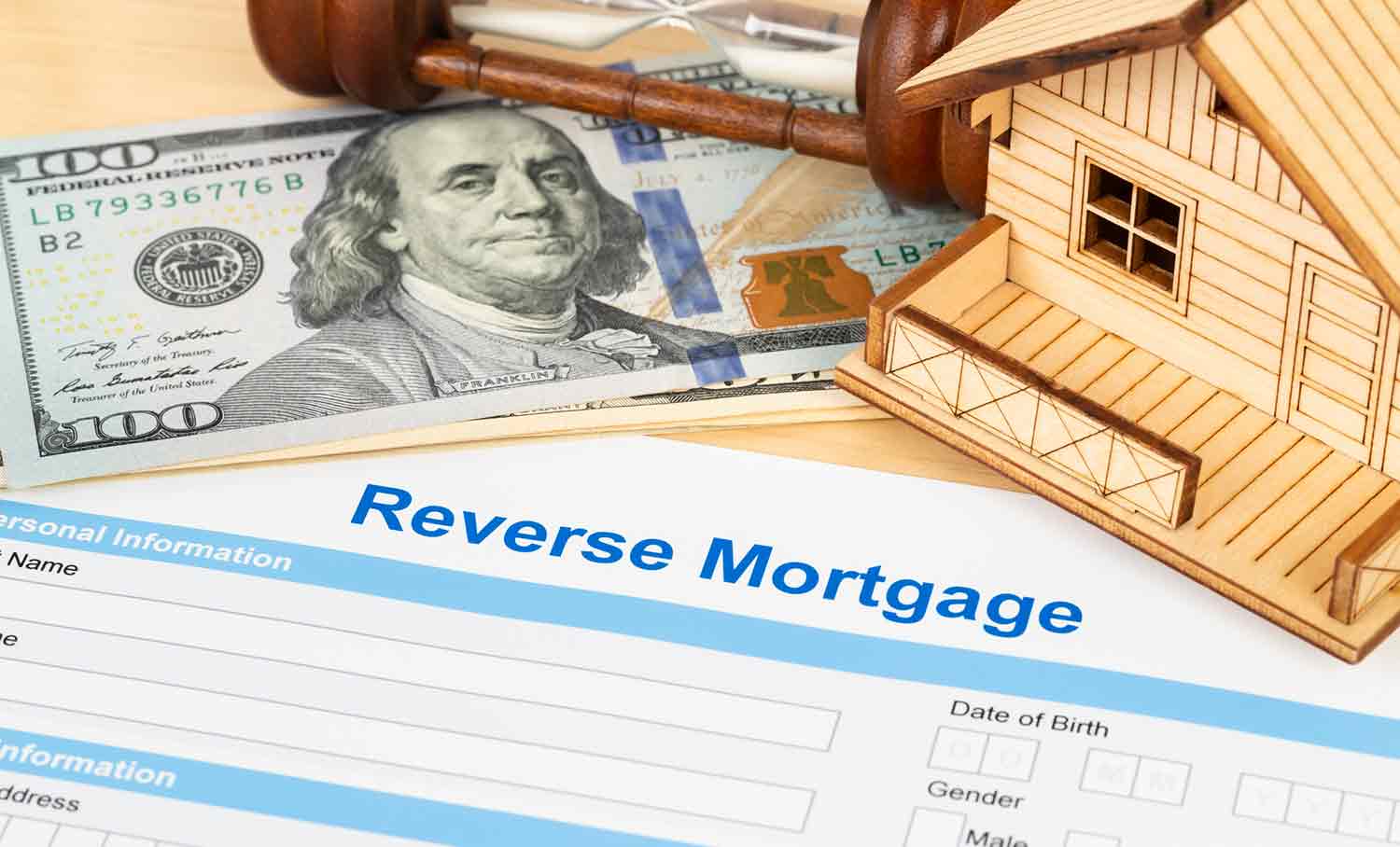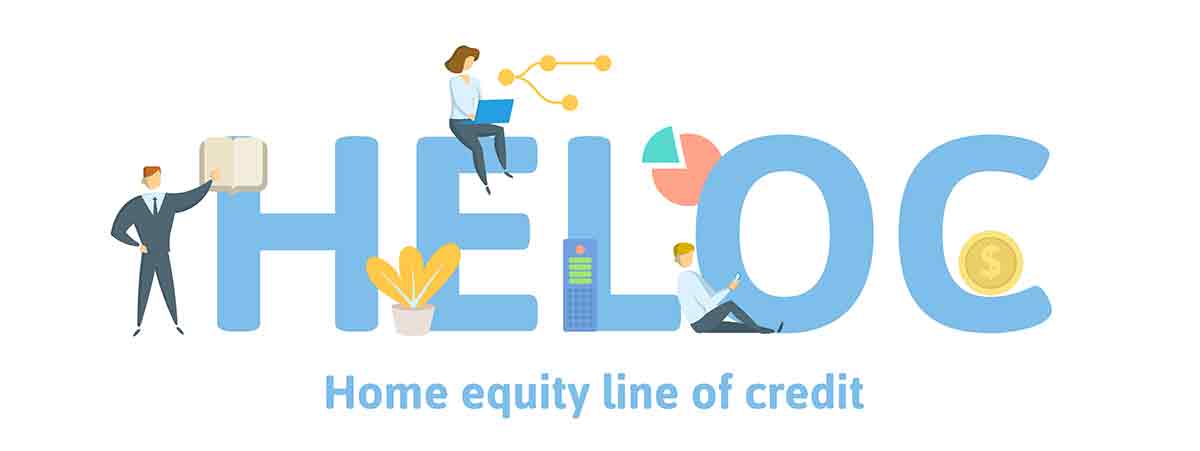A reverse mortgage can be a good way to make sure your living costs and medical expenses are covered later in life. But while a reverse mortgage can be a sound financial move for some borrowers, it isn’t a one-size-fits-all solution. Before taking out a reverse mortgage, make sure you understand the different types of reverse mortgages available. There are certain pros and cons associated with this type of home loan and many factors to consider.
👉 Truss Financial Group offers reverse mortgages to non-traditional borrowers. Get started today!
3 Types of Reverse Mortgages
- Home Equity Conversion Mortgage (HECM)
- Single Purpose Reverse Mortgage
- Proprietary Reverse Mortgage
The reverse mortgage made its debut in the United States in 1961, when a bank in Maine issued this type of loan for the first time. A reverse mortgage loan allows borrowers to use the home equity they’ve built as security against a new loan. A reverse mortgage is often used to pay off a current traditional mortgage, help pay for medical expenses, supplement current Social Security income and retirement savings, or some combination of these. Once a reverse mortgage is established, a homeowner generally isn’t required to pay back the loan until they die, move, or sell the home.
While this type of mortgage offers several attractive advantages to later-in-life borrowers, it does come with potential pitfalls and dangers. Keep reading for everything you need to know about whether a reverse mortgage is a good idea for you and your family.
What Is a Reverse Mortgage?

A reverse mortgage is a home equity loan. This type of loan is often accessed by homeowners who are at least age 62 and who have accrued a high amount of equity in their home – typically at least 50% of the home’s appraised value.
With a reverse mortgage, the homeowner essentially is borrowing against the equity in their home to access funds for daily living expenses. This is an attractive option for late-in-life homeowners who either already have or who fear running out of their savings. By tapping into their home’s equity, these homeowners gain the liquidity they need to increase their financial stability in their later years.
Loan payouts can be structured as a lump sum, a line of credit, or periodic annuity payments (usually monthly, quarterly, or annually) depending on the borrower’s preference. Loan payouts also are tax-free.
Reverse mortgage loans issued by government-backed programs have strict guidelines and lending standards in place. You can also find reverse mortgages issued by private lenders. The government-insured programs are usually more favorable since they have a lower risk of being a scam. To protect your assets, it’s a good idea to work with a financial adviser or home mortgage counselor to choose a loan that’s right for you.
In most cases, a reverse mortgage is never paid back by the homeowner. Instead, when the homeowner dies, their heirs will sell the home and use the proceeds to pay the loan balance. If there’s any excess, it goes back to the estate/heirs of the borrower. In most cases, the estate/heirs are not responsible for any additional debt if the house sells for less than the amount owed on the loan.
To be eligible for a reverse mortgage, the youngest borrower on the mortgage loan must be at least 62 years old. In addition, borrowers are eligible to borrow only against a primary residence with one primary lien against it.
Reverse mortgages typically are only approved for single-family homes, condominiums, manufactured homes built after June of 1976, or multi-unit homes of up to four buildings. If homeowners are getting a government-insured reverse mortgage, they must complete a mandatory session with a reverse mortgage counselor, along with keeping up with all property taxes, condominium fees, etc., and keeping the property in overall good condition.
If the reverse mortgage is issued by a private bank, the borrowers will need to abide by the stipulations set forth by the private lender.
Several factors will determine the amount of money a homeowner can borrow through a reverse mortgage. This is known as the principal limit. The principal limit will vary based on the age of the youngest borrower or eligible non-borrowing spouse, current interest rates, the HECM mortgage limit, and the home’s appraised value. Homeowners are likely to qualify for a higher principal limit the older they are, the more money their property is worth, and the lower the current interest rate.
What Are the Advantages of a Reverse Mortgage?
Under the right circumstances, a reverse mortgage has several advantages. First, it’s an easy way to access money you may need for unexpected expenses late in life, particularly medical expenses. In addition, a reverse mortgage usually boasts interest rates that are competitive with other mortgage options, and all associated closing costs can be rolled into the loan balance.
A reverse mortgage also doesn’t have to be repaid out of pocket. Many homeowners enter into a reverse mortgage because they will never pay off the loan. Instead, it will be paid with the sale of the home after the homeowner’s death. That means no monthly mortgage payment for the homeowner. Also, a non-borrowing spouse who is not listed on the mortgage can usually remain in the home after the borrower’s death.
In many cases, a reverse mortgage can help later-in-life borrowers enjoy their retirement years without the stress of worrying about finances. For homeowners facing possible foreclosure, a reverse mortgage can help pay off any existing mortgage and other expenses, freeing up funds that can help avoid foreclosure and keep the homeowner in their home. If your home appreciates to the point that it’s worth more than the reverse mortgage, your heirs still could enjoy some proceeds from your estate.
What Are the Disadvantages of a Reverse Mortgage?
The main disadvantage of a reverse mortgage is that this type of mortgage loan has attracted many unscrupulous and untrustworthy lenders over time. The best mortgage lenders are honest, so you just need to do thorough research before choosing a lender.
The U.S. Federal Bureau of Investigation has shared some tips for avoiding reverse mortgage scams. First and foremost, the FBI recommends not responding directly to any unsolicited direct mail pieces or other ads you may receive. In addition, be very suspicious of any “lender” who offers you something for nothing.
No matter what lender you use, it’s a good idea to have your lawyer review any loan documents before you sign them. Don’t sign anything you don’t completely understand and always get a second opinion. In many cases, scammers try to get homeowners to take out loans with outrageous interest rates or carefully hidden terms that could make it possible for the homeowner to lose their home.
One disadvantage associated with a federal reverse mortgage is that it can be difficult to qualify, especially considering the age requirement and the fact that a borrower needs to have at least 50% equity in their home. In some cases, the overall costs associated with a reverse mortgage can be more expensive than with a conventional home mortgage. Most reverse mortgages require a mortgage insurance premium, plus the loan must be paid back before your heirs can inherit anything from your estate.
A reverse mortgage doesn’t eliminate other costs associated with homeownership. The homeowner still must keep the property in good repair and pay all associated property taxes and homeowners insurance. Plus, if you don’t remain in good standing with your lender, you could potentially lose your home.
3 Types of Reverse Mortgages

There are three main types of reverse mortgages, as outlined below.
Home Equity Conversion Mortgage (HECM)
A home equity conversion mortgage is insured by the Federal Housing Administration (FHA) through the U.S. Department of Housing and Urban Development (HUD). This type of reverse mortgage can be used for just about anything the borrower needs. Payments can be received as a lump sum, a line of credit, a monthly payment, or any combination of these options. An HECM loan may be more expensive to get than a conventional mortgage loan, especially when it comes to the associated up-front costs.
The HECM is the most widely accessed version of the reverse mortgage loan, featuring no income limitations or medical requirements and no stipulations around how the loan can be used. Before an HECM is released to a borrower, the homeowner must complete a counseling session with an HECM adviser who will outline associated costs, payment options, and responsibilities.
The adviser may alert the homeowner to less expensive loan options. After the counseling session, the homeowner will be notified regarding how their age, the value of their home, and current interest rates influence the amount of money they can borrow through their HECM loan. Generally, the older the borrower and the more equity the borrower has in their home, the more money they are able to access.
Upfront costs associated with an HECM include the mortgage insurance premium – a 2% payment will be due at the loan’s closing, followed by a yearly payment of 0.5% of the outstanding loan balance. The reverse mortgage lender also will charge an origination fee for your HECM reverse mortgage. You can expect that the amount will be either $2,500 or 2% of the first $200,000 of your home’s appraised value, plus 1% of the amount over $200,000. This fee is capped at $6,000.
You can expect to pay servicing fees for the lender to maintain your reverse mortgage over the life of your mortgage loan. These fees are limited to $30 for loans with a fixed rate or an annually adjusting rate, and $35 for loans with rates that adjust on a monthly basis. You may also be responsible for some costs charged by third parties, such as those for appraisals or home inspections, credit check, title search, and title insurance.
Single Purpose Reverse Mortgage
Single purpose reverse mortgages are usually provided by state agencies, local governments, or nonprofit organizations. These loans are designated for a singular purpose, as defined by the lender – home improvements or repairs, for example. These loans generally are the least expensive type of reverse mortgage to get, which means the borrower will pay less in associated fees and interest than with other reverse mortgage options. The reason for their lower costs is that they are backed by the U.S. government or a nonprofit organization, so the lender assumes less risk by issuing the reverse mortgage.
Repayment of a single purpose reverse mortgage isn’t required until the home is sold, the borrower moves to a different primary residence, or the borrower dies. This type of reverse mortgage also becomes due if the homeowner stops maintaining homeowners insurance on the property or if the city condemns the property.
Single purpose reverse mortgages are not available in every state, so talk to your personal finance adviser about whether this type of loan is available in your area.
Proprietary Reverse Mortgage
Proprietary reverse mortgages are backed by private lending institutions instead of by the federal government. They tend to be more popular with borrowers who want to access more money and who have homes appraised at higher values. With these loans, all eligibility requirements, rates, fees, terms, and underwriting steps are set by the reverse mortgage lender, so there’s a wide variety when it comes to what you’ll find. For example, some lenders may require you to go through financial counseling before they will fund your loan. Overall, these loans may feature higher or different fees than a standard FHA loan.
Proprietary reverse mortgages typically are the easiest reverse mortgage loans to qualify for and also generally fund very quickly. However, you should be careful approaching this type of loan. Proprietary reverse mortgages are notorious for attracting unscrupulous lenders or scam artists. Make sure you’re working with a trusted financial adviser to choose your lender and particular loan if you believe a proprietary reverse mortgage is the best loan product for you.
Be sure to compare interest rates and fees from several proprietary reverse mortgage lenders, along with getting quotes from several HECM lenders to determine which option gives you the best deal overall.
What Is a Home Equity Line of Credit (HELOC)?

A home equity line of credit, or a HELOC, is another way that borrowers can tap into the equity in their home to access an infusion of cash. Much like a credit card, a HELOC allows the borrower to draw on the line of credit when it’s needed and only pay interest on the amount that’s used. HELOCs generally come with variable interest rates that are lower than standard credit card rates since the borrower’s home is used as collateral. A borrower generally must have at least 20% equity in their home to qualify for a HELOC.
A HELOC, unlike a reverse mortgage, requires the borrower to make regular payments, most of which go only toward interest during the first 10 years. In addition, it’s possible for the lender to freeze a HELOC at any point, and doing so has not been unheard of during dramatic economic downturns. As a borrower, you also may find that a home equity line of credit is more difficult to obtain than a reverse mortgage.
Is a Reverse Mortgage Right for Me?
Depending on your circumstances, a reverse mortgage may be the right type of loan for you. Keep in mind that these home loans are structured specifically for a certain type of borrower.
A reverse mortgage may be the right product for you if you have considerable home equity (more than 50%) but you’ve spent much of your retirement savings. It can also be the best loan if you are encountering greater than anticipated costs of living in your later years, or if you have no heirs who you want to inherit your home.
However, if you have other savings you can rely on, including life insurance, a reverse mortgage may not be the best choice of loan. Never rush into a reverse mortgage loan with a private lender without doing thorough research.
It’s in your best interest to talk with a trusted financial adviser about your best options. A personal finance specialist can help objectively examine all of your choices and settle on the one that positions you for the best financial health.
👉 Truss Financial Group offers reverse mortgages to non-traditional borrowers. Get qualified today!






